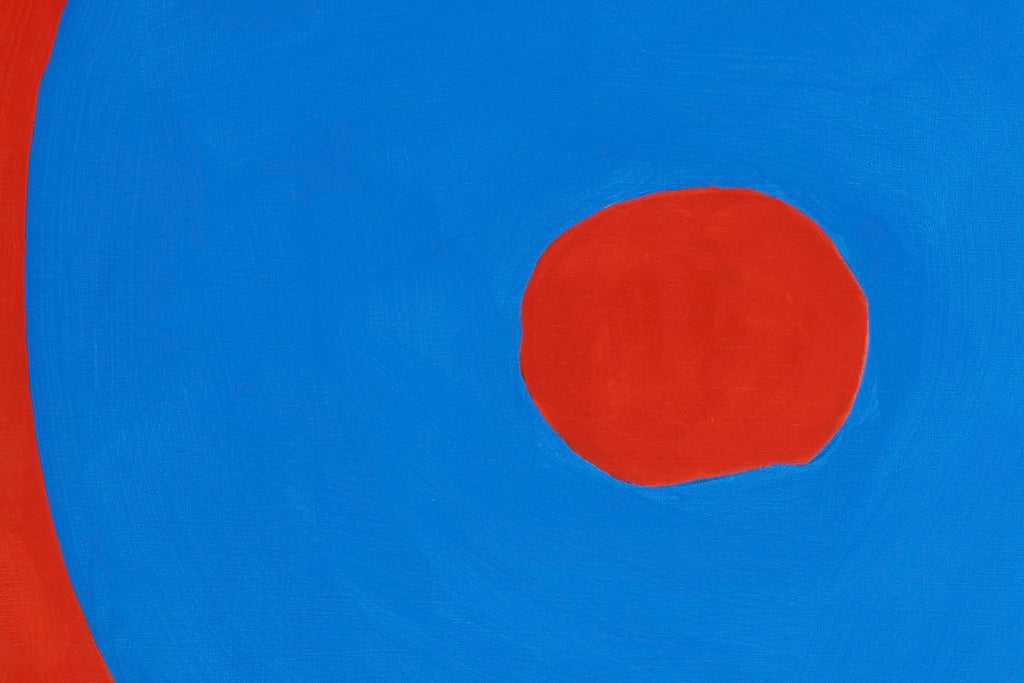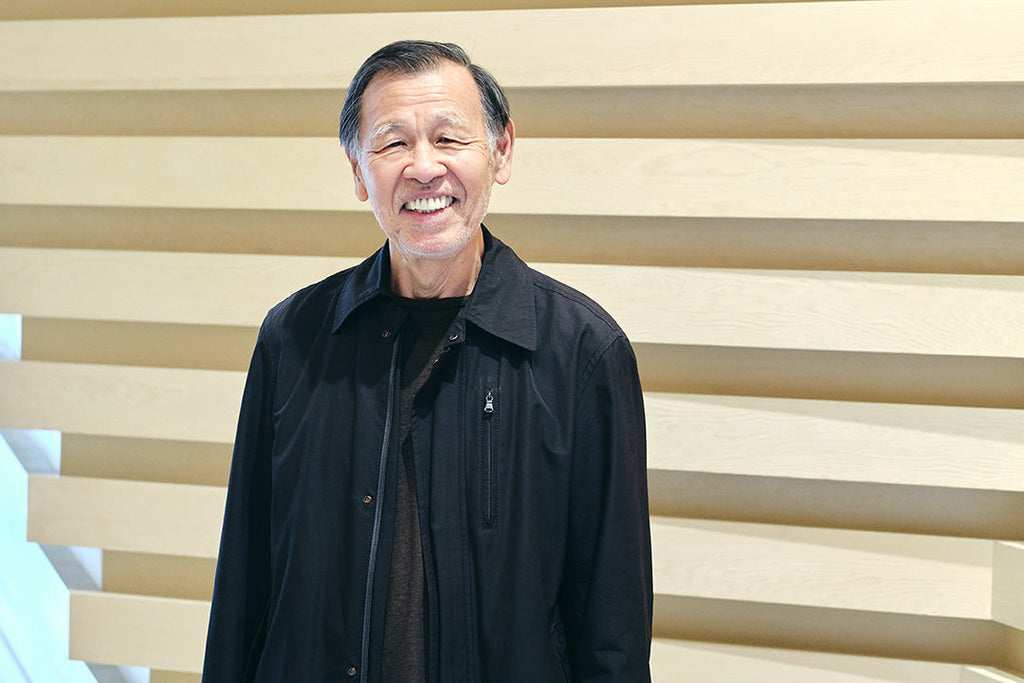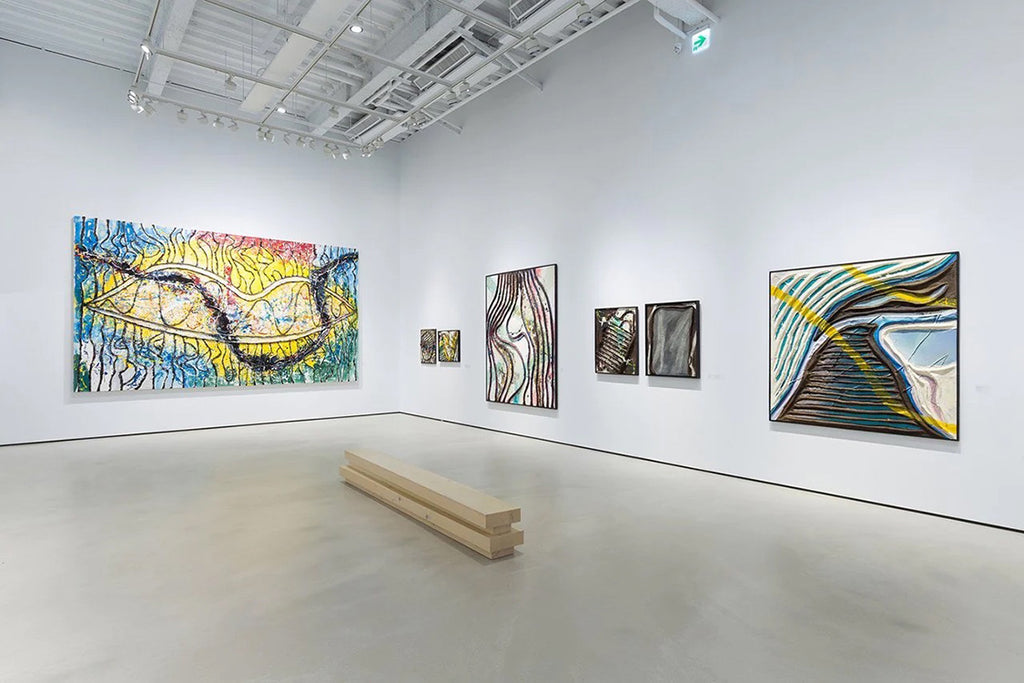ARTICLES
Go Yayanagi’s Sense of Humor
A New Appreciation Contemporary Japanese and Asian Art
11/23

“GO YAYANAGI: CHALLENGE, RIGHT NOW! MOVE FORWARD!” Whitestone Ginza New Gallery, 2018
In our ongoing series, we present the digital archive of the book 'A New Appreciation Contemporary Japanese and Asian Art' This book delves into internationally acclaimed artists and the dynamics of the Asian art market. The eleventh installment introduces Go Yayanagi.
Go Yayanagi’s Sense of Humor
Hiromichi Terashima
Director
Hongo Shin Memorial Museum of Sculpture, Sapporo
Broad Ranging Creativity: Prints, Paintings, Installations
Go Yayanagi presented me with an unexpected proposal when I was organizing his forty year retrospective at the Hokkaido Obihiro Museum of Art nearly thirty years ago. The museum had just opened a half year earlier, in September 1991.
He proposed installation of a series of ‘Go Yayanagi Banners’ at 10 meter intervals along the three kilometer road leading from Obihiro Station, the main transportation hub of the city, to the Obihiro Museum. This was the kind of thing new shops did for grand opening sales, for example, or festival day displays at shrines, or yellow caution flags placed on highways. His idea was that the line of banners would culmination with a huge Yayanagi banner greeting guests at the front of the Museum.
The idea took me by surprise. The banners would have to be produced. A budget would be needed. We would have to get permissions from residents along the road and from the authorities managing the roads. Even if that could all be accomplished, there would also be the question and difficulties connected with installation and maintenance. Above all, the project seemed to be beneath the dignity of the Museum. Eventually, the plan was not realized. Yayanagi accepted the alternative of having his 5 meter long black and white striped Wave raised every morning, along with the national flag, on one of the flagpoles in the Museum’s Monument Square. Yayanagi’s flag, however, was not placed on the center pole.
There was criticism and controversy around the work, claims that it was commercial, like an advertisement signboard. As an art project, however, it was dynamic and fun and had a clear purpose. It may in fact have been more meaningful than the arrangement of the exhibition itself.
There was also another project that could not be realized at that time. The soon to be opened Hokkaido Obihiro Museum of Art had a clear vision of dedication to contemporary art. There were plans for an invitation program to allow artists to produce works at the museum, and for collaborations with local community. These kinds of programs are more common today as ‘artist in residency’ or ‘public outreach’ programs.
The Museum invited Yayanagi to the site for his exhibition preparations. In the middle of the Golden Week holidays, just before the opening, the Museum organized a public participation event to produce Go Yayanagi’s Homage to the Locus of the Universe of Beauty. Truckloads of bales of hay were delivered to the Museum’s Monument Square in front of the Museum entrance. The bales were stacked to become a huge six meter high installation. Objects shaped like human legs painted in ‘Yayanagi colors’ were placed at the very top. Visitors to the Museum during the spring holidays must have been totally surprised to see the local participants, all wearing matching parkas in Yayanagi colors,’ covered in hay.
As son of a rancher, Yayanagi was familiar with hay from the time he was a child.
For what reason was this natural material, common in Hokkaido, placed incongruously in a plaza surrounded by the architecture of a modern concrete building? No doubt Yayanagi found something inherently humorous about the juxtaposition of urban society and nature. The title also indicated his intention to emphasize the scale of the relationship between humans and the universe – though this interpretation may be overly romantic.
Yayanagi’s initial proposal was to cover Antoine Bourdelle’s Victory, a four meter tall bronze sculpture installed in the Museum’s Monument Square with firewood, leaving only the head of the sculpture exposed. This plan was a shock to me and also could not be realized. The Bourdelle sculpture was installed as a symbol of the newly inaugurated Museum. Yayanagi’s plan seemed intended to deny its existence. It may be true that the modern sculpture clashes with the streamline contemporary architecture. However, the sculpture is entrusted with the important role of welcoming visitors. Aside from the flag poles, there is nothing else in the courtyard. Above all, covering the sculpture with firewood was against the Museum’s idea of dignity.

Homage to the Universe, 1992, installation
Consistent Sense of Humor
Once all plans had been mutually agreed upon and the theme Homage to the Locus of the Universe of Beauty decided, installation commenced. Instead of a statue rooted in the earth, a colorful mannequin entitled Woman from Outer Space was buried with her head in a mound of hay. In order to elucidate Yayanagi’s vision for the buried figures, his preliminary sketches and drawings were included in the exhibit hall and in an exhibit catalog. The drawings, in and of themselves, were striking with Yayanagi’s use of color, craft, and collage. I was amused to see Yayanagi had entitled the collection Bourdelle Laughs. What a sense of humor! At what did he presume the famous French sculptor would be laughing? Perhaps he laughed at the fiascos we encountered along each step of our planning process, I thought.
The mounds of hay reminded me of Millet’s The Gleaners or Monet’s Haystacks. If I overlay Bourdelle’s art on the images of Millet or Monet, I begin to understand Yayanagi’s concept. It was as though he was rebelling against conformity and western authority in the modern art world. It was through irony and humor that he was expressing his rebellion.
The word humor (ユーモア) was adapted into the Japanese language from English during the Meiji era. Though adapted from English, the origin of the word is Latin, with an original meaning of body fluids (such as blood). In that sense, humor can be understood as something critical to human existence. It is at the root of being human and of humanism. All of Yayanagi’s work is infused with humor.
Yayanagi’s two unrealized proposals described here are comical if seen through the filter of humor. It is important to face reality’s difficulties and issues head on. However, I can recall that whenever things get overly serious, a sense of humor allows a broader perspective.
Yayanagi’s art is immediately recognizable from his expression in simple forms and joyful colors. In addition to their beauty, his works reveal the profound sense of humor in his character. Humor and laughter can be shared with everyone and it is his sense of humor that defines Yayanagi as an artist.

Nami, 1991, installation
Hiromichi Terashima

Born in 1955 in Takikawa City, Hokkaido. Graduated Kanazawa College of Art in sculpture and went on to work as a curator, starting at the Hokkaido Prefectural Migishi Kotaro Museum of Art, and then Hokkaido Museum of Modern Art, Obihiro Museum of Art, Hokkaido Museum of Literature, Kushiro Art Museum, Hokkaido. Appointed curator at the Sapporo Museum of Modern Art in 2014 and in 2015 as Vice Director of Arts and Sciences. Currently Director of the Hongo Shin Memorial Museum of Sculpture, Sapporo. His activities have been broad, ranging from ancient to contemporary art.
Book Information
Title: A New Appreciation Contemporary Japanese and Asian Art (English Edition)
Publisher : Whitestone Co., Ltd.
Release Date : February 26, 2020
*Information in this article is at the time of publication.
ARTIST
RELATED ARTICLES
-

Life in New York as an Artist: Harmony of Art, People, and Space
A New Appreciation Contemporary Japanese and Asian Art
23/23 -

Discovering the Essence of Art: Renowned American Artist, Tadaaki Kuwayama
A New Appreciation Contemporary Japanese and Asian Art
22/23 -

Painting that Does Not Resemble to Anyone Else’s Expression that Reaches the Deepest Layer of the Heart
A New Appreciation Contemporary Japanese and Asian Art
21/23 -

Being Gutai Is All About Myself
A New Appreciation Contemporary Japanese and Asian Art
20/23



